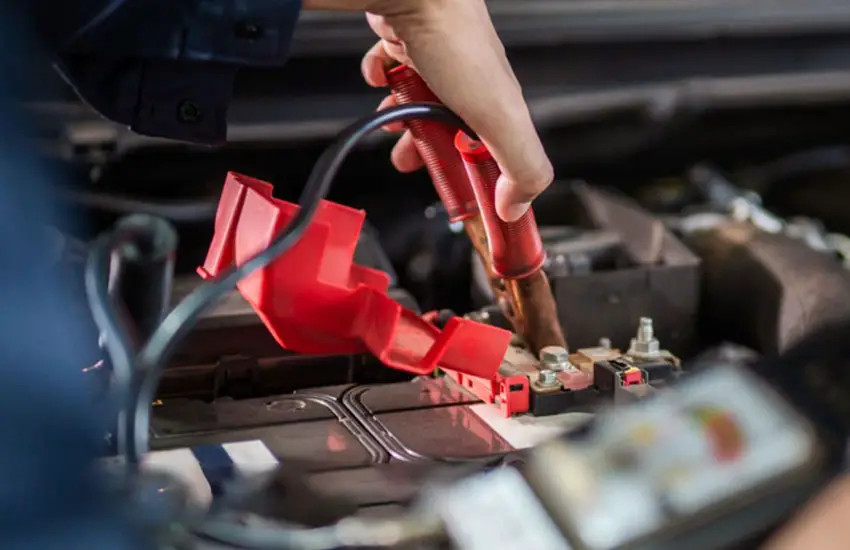As an Amazon Associate, I earn from qualifying purchases at no extra cost to you.
How Long Does It Take to Charge a Car Battery at 10 Amps?
Imagine you're all set for a road trip, but when you turn the key, all you hear is silence. A dead car battery can be a mood spoiler, right? Knowing how to charge your car battery properly, especially at 10 amps, can save you from such moments. Let's dive into everything you need to know to make this task hassle-free and safe.

Factors That Affect Charging Time
When charging a car battery at 10 amps, you can't expect a one-size-fits-all timeline. The time required depends on several factors that influence how quickly and effectively your battery will charge. Let's break it down step by step to understand these factors better.
Battery Capacity
Every car battery has a specific capacity, measured in amp-hours (Ah). Think of it as the size of the fuel tank in your car – the larger it is, the longer it takes to fill up. A typical car battery might range from 40Ah to 100Ah.
For example, if you have a 50Ah battery and you're charging it at 10 amps, a basic calculation would suggest it'll take 5 hours to fully charge (50Ah ÷ 10 amps = 5 hours). However, real-life charging isn't always this straightforward because of efficiency losses and other factors.
A bigger battery, like one with 70Ah, would obviously take longer – about 7 hours in ideal conditions. And remember, batteries in larger vehicles like trucks or SUVs tend to have higher capacities, meaning more time on the charger.
Current State of Charge
The state of your battery's charge is another critical factor. If your battery is completely dead (at 0% charge), it'll need more time than one that's partially charged. For instance, a battery that's already at 50% charge will only need half the time to reach full capacity.
To estimate your battery's current charge, you can use a voltmeter or consult the display on a smart charger. A fully charged car battery typically shows a voltage of around 12.6 to 12.8 volts when the car is off.
Efficiency of the Charger
Chargers aren't perfect; some energy is lost as heat during the charging process. This means that if you're using a 10-amp charger, you might not be delivering the full 10 amps to your battery.
For most chargers, expect around 10-20% energy loss. So, if you calculate that your battery will take 5 hours to charge, it might actually take closer to 5.5 or 6 hours in practice. Investing in a high-quality charger can help reduce these losses and save you time.
Ambient Temperature
Temperature plays a sneaky role in charging time. Batteries charge faster in moderate temperatures. Extreme cold slows down the chemical reactions inside the battery, while extreme heat can damage it or reduce efficiency. If you're charging your battery in freezing winter conditions or a blazing hot garage, keep this in mind.
Battery Age and Condition
A new battery will charge faster and hold its charge longer than an old or worn-out one. Over time, batteries lose capacity due to wear and tear, making them harder to charge. If your battery is several years old, you might notice that it takes longer to charge or doesn't seem to last as long.
Calculating Charging Time and Safety Tips
Now that we've looked at the factors affecting charging time, let's move on to the calculations and some essential safety tips to ensure your charging process goes smoothly.
Formula for Charging Time
The basic formula to calculate charging time is:
Charging Time = Battery Capacity ÷ Charging Rate.
Using this formula, let's consider a 60Ah battery charged at 10 amps. Ideally, it should take 6 hours (60Ah ÷ 10 amps = 6 hours). However, remember to account for efficiency losses. Adding 10-20% for inefficiencies, the actual time might range from 6.6 to 7.2 hours.
This formula works for a variety of situations, whether you're charging a 40Ah, 70Ah, or even 100Ah battery. Just plug in the numbers and add a little buffer for inefficiencies.
Examples of Charging Times
Let's apply this formula to a few scenarios:
50Ah Battery at 10 Amps:
Charging time = 50Ah ÷ 10 amps = 5 hours.
Accounting for 15% loss = 5.75 hours.
70Ah Battery at 10 Amps:
Charging time = 70Ah ÷ 10 amps = 7 hours.
Accounting for 15% loss = 8.05 hours.
Partially Charged 60Ah Battery (50% Charged):
Remaining capacity to charge = 30Ah (60Ah × 50%).
Charging time = 30Ah ÷ 10 amps = 3 hours.
Accounting for 15% loss = 3.45 hours.
Avoid Overcharging
Overcharging your battery is a recipe for disaster. It can lead to overheating, gassing, or even permanent damage to the battery. Modern chargers often come with an automatic shut-off feature to prevent overcharging, but it's always good to keep an eye on the process.
Ventilation and Location
When charging, car batteries release gases like hydrogen, which can be flammable. Always charge your battery in a well-ventilated area to avoid any risk of explosion. Place the battery and charger on a stable, non-flammable surface and ensure the cables are securely connected.
Monitoring the Charging Process
Even with a smart charger, it's a good idea to monitor the charging process. Use a voltmeter to check the battery's progress and stop charging once the voltage reaches 12.6 to 12.8 volts (for most lead-acid batteries).
Disconnecting Safely
When the battery is fully charged, turn off the charger before disconnecting the cables. Remove the negative cable first, followed by the positive, to avoid sparking.
Frequently Asked Questions
Is it safe to leave my battery on a 10-amp charger overnight?
While many modern chargers are designed to prevent overcharging, it's best to avoid leaving a battery unattended for extended periods.
Can I use a 10-amp charger for all types of car batteries?
Most car batteries can handle a 10-amp charger, but always check your battery’s specifications or manual to be sure.
Do I need to remove the battery from the car to charge it?
Not necessarily. You can charge the battery while it's still in the car, but ensure the engine is off and accessories are disconnected.
Is charging at 10 amps better than 2 amps?
Charging at 10 amps is faster, but 2 amps are gentler and safer for maintaining the battery's health over the long term.
Can I charge a completely dead battery at 10 amps?
Yes, but it may take longer, especially if the battery has been dead for a while. In some cases, a higher initial boost might be needed.
Do I need a special charger for AGM or gel batteries?
Yes, AGM and gel batteries require chargers designed specifically for these types. A regular charger may damage them.
Can extreme temperatures affect the charging process?
Yes, extreme heat or cold can slow down charging or damage the battery. Always charge in moderate conditions if possible.
Is it normal for the charger to get hot during use?
Some heat is normal, but excessive heat could indicate a problem with the charger or battery.
Do I need to clean the battery terminals before charging?
Yes, clean terminals ensure a good connection and more efficient charging. Use a wire brush or terminal cleaner.
Can I use my car while the battery is charging?
No, it's not safe to start or run your car while the battery is connected to a charger.
I hope this guide helped you understand how long it takes to charge a car battery at 10 amps. Remember, charging a battery doesn't have to be stressful – with the right tools and safety measures, it's a straightforward process. Good luck, and may your battery always stay charged!











